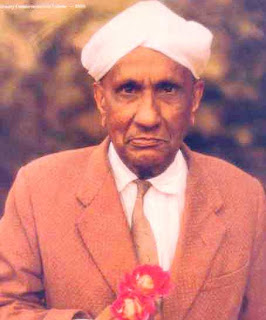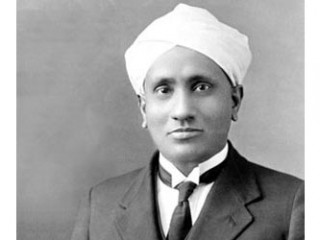
Dr. C.V. Raman was one of the greatest scientists of India, who was awarded the 1930 Nobel Prize in physics for his work on the scattering of light and for the discovery of the ‘Raman Effect’, which is named after him. Chandrasekhar Venkata Raman, commonly known as C.V. Raman was born on November 7, 1888 at Tiruchirapalli in Tamillandu. His mother tongue was Tamil. He was the second children of Chandrasekhar Iyer and Pravathi Ammal. His father was a lecturer in mathematics and physics. Raman was a very brilliant student right from his childhood.
At an early age, Raman moved to the city of Vishakhapatnam, which is situated in state of Andhra Pradesh, where his father accepted a position at the Mr. A V N College. Raman’s academic brilliance was established at a very young age. At the age of twelve, he finished his matriculation education and entered Mr. A V N College and two year later moved to the prestigious presidency college in Madras (Chennai). When he was the age of fifteen he finished at the head of the class too received B. A. with honours in physics and English. In those days, it was a system of government that students who did well academically were typically sent to abroad (England) for additional studies. Because of Raman’s poor health, he was not allowed to go abroad and he continued his studies at the same college. In 1907, barely seventeen, Raman received his Master degree with honors. He got first position in the University in M.A. In the same year, he married with Lokasundari Ammal and with whom he had one son, Radhakrishnan.
He completed his education in Visakhapatanam and Madras (Chennai). After getting top ranking in the Financial Civil Service competitive Exam, he was appointed as Deputy Accountant general in Calcutta. At the time of his graduation, there were few opportunities for scientists in India. This forced him to accept a position with the Indian Civil Services as an Assistant Accountant General in Calcutta. While there, he was able to sustain his interest in science by working, in his remaining time, in the laboratories of the Indian Association for the Cultivation of Science. He studied the physics of stringed instruments and Indian drums.
In 1917, Raman was offered the position of Sir Taraknath Palit Professorship of Physics at Calcutta University. He stayed there for the next fifteen years. During his tenure there, he received world wide recognition for his work in optics and scattering of light. He was elected to the Royal Society of London in 1924 and the British made him a knight of the British Empire in 1929. In 1930, Sir C.V. Raman was awarded with Nobel Prize in Physics for his work on scattering of light. The discovery was later christened as "Raman Effect".
In 1934, C.V. Raman became the director of the newly established Indian Institute of Sciences in Bangalore, where two years later he continued as a professor of physics. Other investigations carried out by Raman were: his experimental and theoretical studies on the diffraction of light by acoustic waves of ultrasonic and hypersonic frequencies (published 1934-1942), and those on the effects produced by X-rays on infrared vibrations in crystals exposed to ordinary light. In 1947, he was appointed as the first National Professor by the new government of Independent India. He retired from the Indian Institute in 1948 and a year later he established the Raman Research Institute in Bangalore, where he worked till his death.




No comments:
Post a Comment